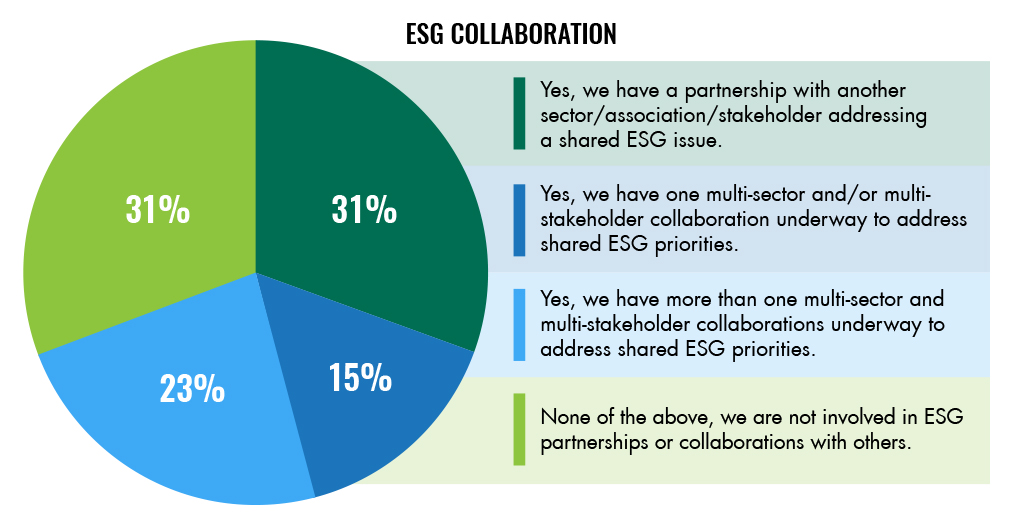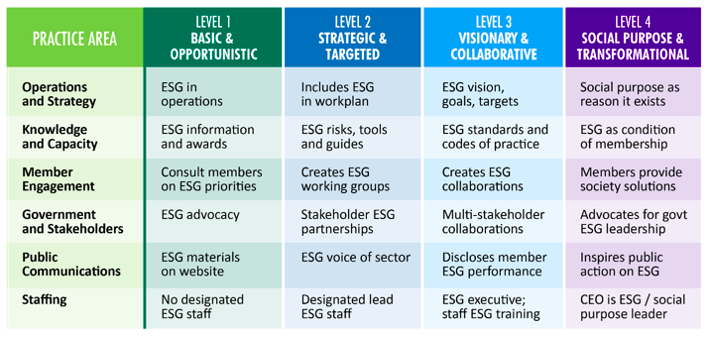As society lurches past the pandemic, other social and environmental indicators continue to spiral out of control: the climate emergency, growing inequality, social unrest, and the loss of nature. Scientists tell us it is not too late to course-correct and ensure long-term well-being for all within nature’s limits. Sectors, professions, occupations, and the associations that represent them, are key to putting society on a sustainable course but must act now.
Fortunately, guidance, best practices and roadmaps exist to help associations with this quest.
Guidance, best practices and roadmaps exist to help associations with the quest to a sustainable future. The Sustainable and Just Association: The Role Associations can play to accelerate a just and sustainable future and Sustainable Association Case Studies are two recent reports commissioned by the Canadian government to unlock the potential of associations to build the sustainability competency and practices of their members. As described in this 2021 Boardroom article, Time for Associations to Help Members Become Forces for Good, many associations are quickly advancing down this path, following the practices of the Sustainable and Just Association rubric.
To further understand industry leadership in this field Strandberg Consulting, in collaboration with Dana Coble, American sustainable business strategist, surveyed 13 national U.S. associations representing plastics, forest and paper products, consumer products, commodities, manufacturing, chemistry, printing, agriculture, and construction industries in early 2022. Strandberg and Coble used the rubric to gauge efforts of associations to help their members build their sustainability practices. They repeated the survey of 59 Canadian associations they conducted in 2021: The Sustainable and Just Association: Canadian Benchmark of Association ESG Practices.
The survey, whose main findings you will find below, used the term “ESG” (environmental, social, governance) instead of sustainability. Notably, all the associations in the survey prefer the term sustainability in their communications, with a small minority starting to use the ESG term.
Top Sustainability Priorities
These are the most common practices associations are advancing with their members:
- Equity, diversity, and inclusion
- Transition to the low-carbon economy
- Circular economy, waste, and recycling
These American associations are playing their part to accelerate the transition to the inclusive, low-carbon and circular economy.
They point to several benefits of having an ESG program or strategy, including the following:
| Benefits of Sustainability Programs | |
| Build reputation | Build credibility and public trust of sector and enhance sector’s social license to operate and grow; build positive stakeholder relations |
| Future-proof sector | Help members anticipate and manage ESG risks and opportunities and build member resilience |
| Advance strategy | Drive association’s strategy forward and fulfill association’s purpose, mission, and vision |
| Drive innovation | Enhance innovation, save costs, and open market opportunities for members |
| Influence policy | Influence, forestall and prepare for government regulation; build positive government relations |
They are not as motivated by employee or member recruitment and retention. One-half are motivated by the moral case and are doing it because “it’s the right thing to do”.
Top Sustainability Practices
Nearly all the associations are:
- Adopting ESG policies and providing ESG information to members
- Bringing their members together to address common ESG issues through collaboration
The survey found that while a few have adopted targets to improve the overall ESG performance of their members, most haven’t. They also tend not to have ESG standards, benchmarks, or certifications to drive their members’ ESG performance although leading associations do.
In-house ESG practices were also not common. They are not yet embedding ESG criteria in procurement, investments, meetings, meals, travel, event management, venue selection, promotional products, hiring and other office practices.
With about two-thirds having staff with assigned ESG responsibility, such as VP/Director/Manager of Sustainability and Director of Sustainability Strategy and Performance, all practices are expected to improve in the years ahead.
The chart below summarizes the ESG practices they have underway.

While most are supporting ESG collaborations within their sector, about two-thirds are involved in partnerships and collaborations beyond their sector as can be seen in the graph below. They are proactively engaging other sectors and stakeholders to address shared ESG priorities and tackle ESG barriers together.

Sustainability Leadership
Associations were asked whether they functioned at the basic and opportunistic level, the strategic and targeted level, the visionary and collaborative level, or the social purpose and transformational level as set out in the chart below.

Half peg themselves at the visionary and collaborative level, while the rest are self-assessed at basic and strategic levels. No one is yet advancing into the social purpose and transformational level although some early transformational and purpose-driven practices are starting to take shape.
2022 Sustainability Priorities
Surveyed on their ESG priorities for 2022, as set out below, associations indicated they were engaging and educating members, building their association’s profile with the public, advocating to government on ESG policy, supporting their members to transition to a low-carbon and circular economy, and developing ESG goals and targets for the membership.
| Member ESG engagement | Public awareness and advocacy | Sector ESG transition |
| Engage and survey members on ESG | Develop ESG position papers and highlight ESG leadership | Decarbonize sector and move industry to net zero |
| Offer ESG education to members | Publish industry ESG report | Develop roadmap to achieve industry-wide recycling targets |
| Provide information on ESG standards and reporting | Advocate to government to advance ESG policies | Develop ESG goals members can pursue together |
Coro Strandberg is President of Strandberg Consulting, based in Vancouver, Canada. She has 30 years’ experience advising governments, businesses and associations on strategies to leverage the market as a force for good. Coro is a nationally recognized Canadian thought leader on the future of business, sectors, professions and associations in society. She publishes her thought leadership on her website at www.corostrandberg.com.
One of the associations that filled out the survey, Can Manufacturers Institute (CMI) which represents U.S. metal can manufacturers and their suppliers, is helping its members accelerate on the ESG path by:
Setting Ambitious Industry ESG Goals and Roadmap:
“All of CMI’s beverage can manufacturer and aluminum can sheet supplier members for the first time set aluminum beverage can recycling rates that they are committing to achieve by certain dates. These targets, including reaching a 70 per cent U.S. aluminum beverage can recycling rate by 2030, were announced last year, with four pillars of action to achieve them. CMI will publish an industry roadmap to achieving the targets in 2022.”
Conducting ESG Policy Advocacy with Partner Association:
“CMI and The Aluminum Association (a trade association for the aluminum production, fabrication and recycling industries, and their suppliers) aluminum can and sheet manufacturers will advocate for deposit return systems at the federal and state levels. CMI and Aluminum Association members will decide on key states to lobby, communicate, and actively engage to enable an environment in which a new deposit system can occur. Most deposit systems started in the 1970s with the most recent new deposit system being Hawaii in 2002. Deposit systems can significantly improve beverage container recycling rates and are key to the aluminum beverage can industry achieving its newly announced recycling rate targets.”
Like CMI, other American associations are accelerating the transition to the inclusive, low-carbon and circular economy. By following the best practices, tools and resources laid out here, associations around the world can become a force for good and help put their memberships and society on a sustainable footing.
This article will be soon followed up by the second round of findings to Strandberg and Coble’s survey among American associations.
